Posts Tagged: catmint
Ready or Not, Here I Come!
Ready or not, here I come! "Wait, can you slow down a bit?" I ask. "I can't focus when you move so fast!" No, sorry! I'm in a hurry! Anthophora urbana, a solitary, ground-nesting bee, frequents our garden to forage on the catmint (Nepeta) and...
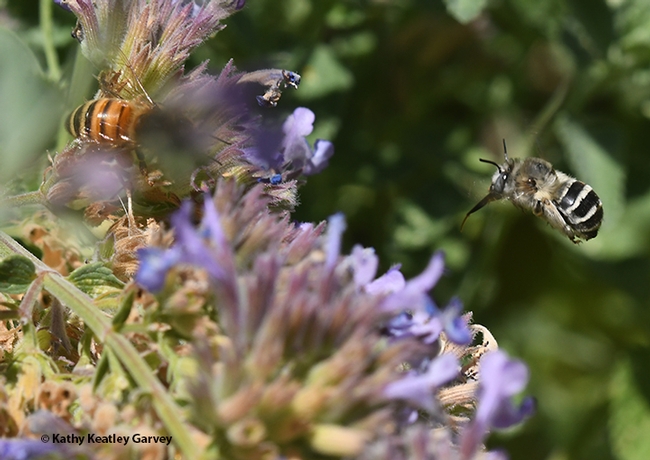
A digger bee, Anthophora urbana in flight, as it heads for another catmint blossom. (Photo by Kathy Keatley Garvey)
Happy Fly Day Friday!
Happy Fly Day Friday! If you've ever wondered why entomologists and insect enthusiasts post images of flies on Friday, not to worry. They consider this "Fly Day." The Urban Dictionary defines Fly Day as "the day of the week...
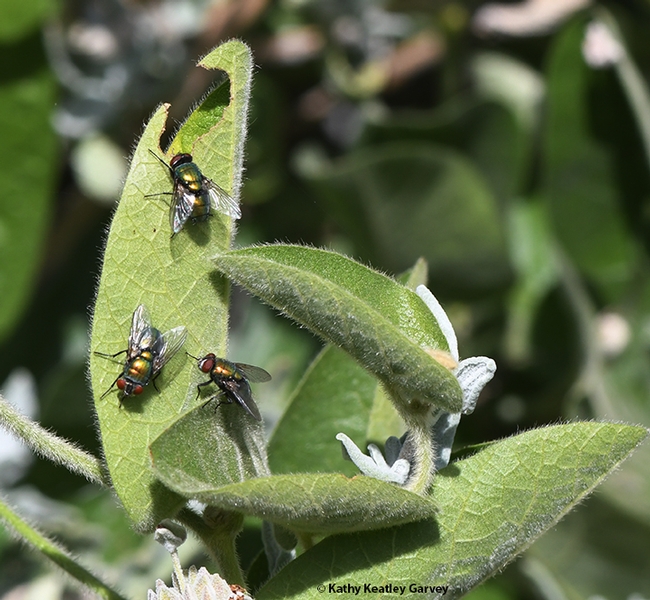
It's Friday Fly Day, so how about three green bottle flies on a catmint leaf? Imsge taken in Vacaville. (Photo by Kathy Keatley Garvey)
The Bee and the Butterfly
So here's this Gulf Fritillary (Agraulis vanillae) clinging to a lavender stem in our pollinator garden. It is all alone--for a little white. Then here come honey bees seeking to forage on the lavender, too. One bee buzzes next to the butterfly's...
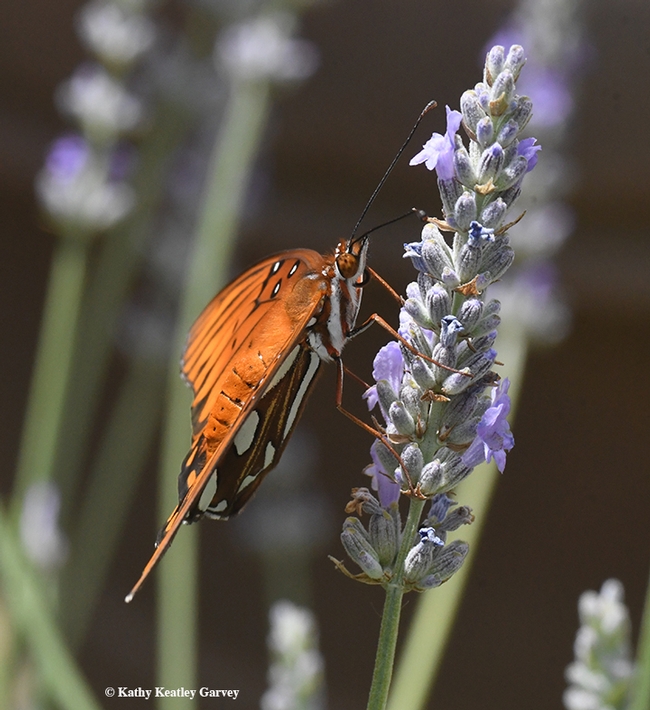
A Gulf Fritillary (Agraulis vanillae) clinging to a lavender stem in Vacaville, Calif. (Photo by Kathy Keatley Garvey)
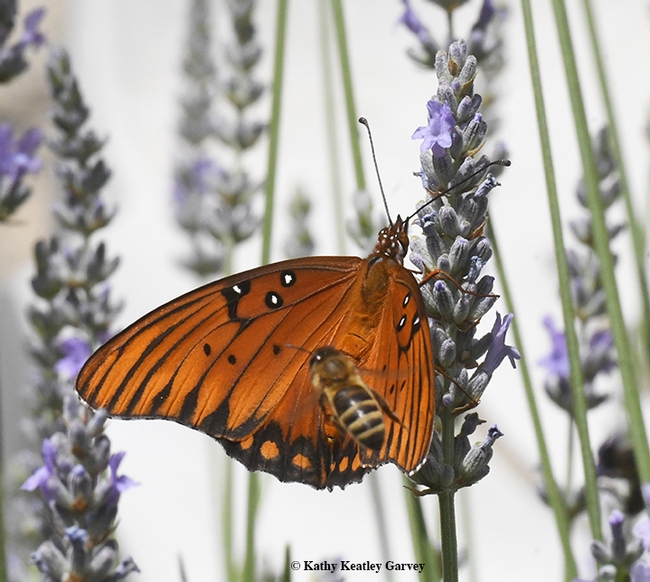
A honey bee, seeking nectar from a lavender, buzzes a Gulf Fritillary, Agraulis vanillae. (Photo by Kathy Keatley Garvey)
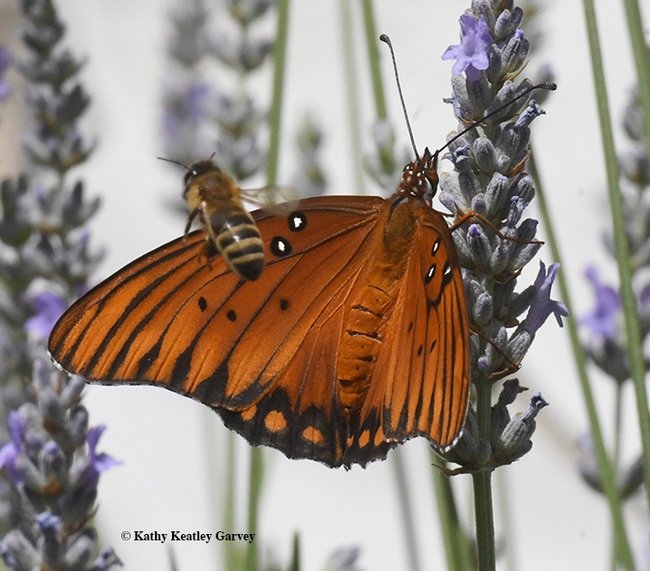
It's up and over and away for the honey bee. Can't you see as big a thing as me? (Photo by Kathy Keatley Garvey)
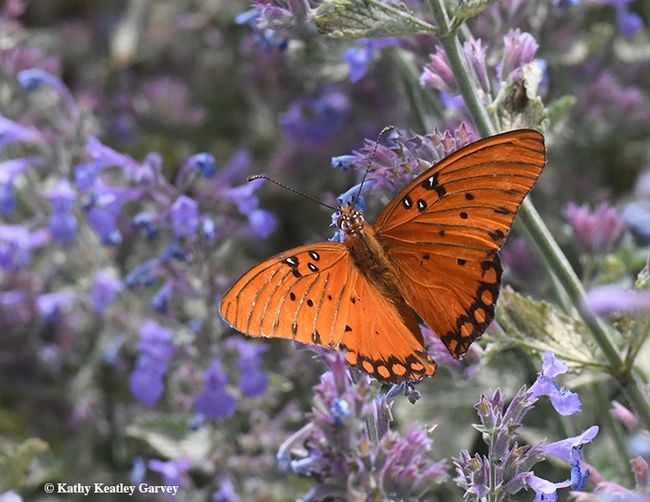
Gulf Fritillary heads for the nearby catmint patch. (Photo by Kathy Keatley Garvey)
All Wrapped Up
Just call it a missed opportunity. Catmint (genus Nepeta) draws scores of insects, from honey bees to leafcutter bees to European wool carder bees. It also draws spiders. We usually see a cellar spider (family Pholcidae) trapping prey in its web....

A cellar spider eyes a honey bee in the catmint (Nepeta). (Photo by Kathy Keatley Garvey)

All wrapped up--a cellar spider nabs another cellar spider. (Photo by Kathy Keatley Garvey)
How Fast Can a Honey Bee Fly?
How fast can a honey bee fly? We captured these photos today of a honey bee nectaring on catmint (genus Nepeta). The bee was moving fast. To blur the wings, we set the shutter speed at 1/640 of a second with an f-stop of 13 and IS0 of 800. But...

A honey bee can beat its wings 230 times every second. (Photo by Kathy Keatley Garvey)

Honey bee spinning like a top. (Photo by Kathy Keatley Garvey)

